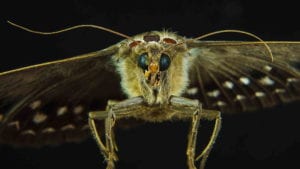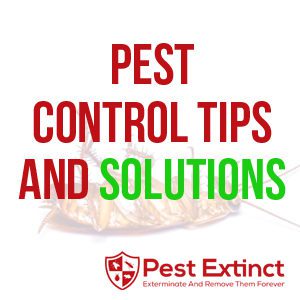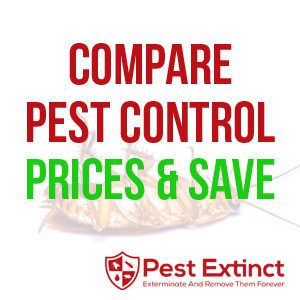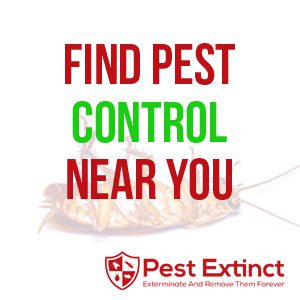
Moth Control: Assessing the Risks and Nuisances
Moths, those seemingly harmless insects flittering around your porch light, are generally considered more of a nuisance than a serious threat. But beyond the annoyance, certain species can cause damage to your clothes, furnishings, and stored food products. In this extensive look into moth control, we’ll discuss the possible risks associated with moth infestations and explore practical solutions for managing and preventing them.
What Exactly Are Moths?
Moths are insects belonging to the order Lepidoptera, the same order as butterflies. They are one of the most diverse groups of insects with over 160,000 recognized species worldwide. Moths vary greatly in size, color, and habitat. While they are generally nocturnal, some species are active during the day.
Characteristics
Moths typically have two pairs of wings covered in scales, and most species have a coiled proboscis for feeding on nectar from flowers. They have a complex life cycle that includes egg, larval (caterpillar), pupal (cocoon), and adult stages.
Diet and Habitat
The diet of moth larvae varies greatly depending on the species. Some feed on plants, potentially making them pests in gardens and farms, while others are detritivores, feeding on decaying organic material. Adult moths generally feed on nectar, although some species do not eat at all as adults. Moths can be found in diverse habitats, including forests, meadows, and urban areas.
Moth vs. Butterfly
Moths are often confused with butterflies due to their similarities. However, they can be distinguished by certain characteristics. Moths usually have feathery antennas and are active at night, whereas butterflies have club-shaped antennas and are diurnal.
Understanding what moths are and their behaviors is a key step in effective moth control, helping you to identify potential risks and take appropriate preventive and reactive measures.

Moths: Risk or Just a Nuisance?
Risks
Certain types of moths can pose risks beyond simple irritation. For instance:
- Clothes Moths: The larvae of these moths can chew through fabrics, especially wool, silk, and other natural materials, causing noticeable damage to garments and upholstery.
- Pantry Moths: These moths can infest food storage areas, contaminating goods with their eggs and larvae. Not only do they ruin food, but they can also lead to health issues if contaminated food is consumed.
Nuisances
Most moths, however, are harmless to humans and pets. They don’t bite or sting and are not known to transmit diseases. Even so, a large infestation can be bothersome and may indicate other underlying issues, such as a nearby source of attraction or entry points into your home.
Methods of Moth Control
Inspection and Cleaning
To begin, conduct a thorough inspection of your home to identify the sources of the moth infestation. Clean your home thoroughly, paying special attention to the kitchen and storage areas.
Clothes Moth Control
To protect your clothing, regularly clean and vacuum areas where fabrics are stored. Use mothballs or cedar chips in closets and drawers to deter moths. Store off-season clothes in sealed plastic bags or containers.
Pantry Moth Control
Ensure all food containers are tightly sealed, and regularly clean pantry shelves and other food storage areas. Dispose of any infested food products immediately.

Professional Moth Control
If you are experiencing a severe moth infestation, it may be best to hire a professional pest control service. Experts can identify the source of the problem, eliminate the infestation, and help you take steps to prevent future issues.
While moths can be both a risk and a nuisance, effective moth control strategies can help manage and prevent infestations, protecting your home, belongings, and food from damage. Recognizing the signs of moth activity and taking prompt action will ensure that these fluttering pests are kept at bay.
Professional Moth Control vs DIY Moth Control
When it comes to managing a moth infestation, homeowners can choose between hiring a professional pest control service or attempting to handle the problem on their own. Both options have their own set of pros and cons, and the best choice depends on the severity of the infestation, the type of moth, and individual preferences and budget. Below is a detailed look at professional moth control versus DIY moth control methods.
Professional Moth Control
Pros:
- Expertise: Professionals have the necessary knowledge and experience to identify the moth species and choose the most effective treatment method.
- Effective Solutions: Professional pest control companies have access to more effective and potent solutions that may not be available to the general public.
- Guaranteed Results: Many companies guarantee their work, offering follow-up treatments at no additional cost if the moths return.
- Time-Efficient: Professionals can typically handle moth infestations more quickly than a homeowner can.
Cons:
- Cost: Hiring a professional service is generally more expensive than attempting to manage the problem on your own.
- Availability: You may have to wait for an appointment, particularly during peak pest control seasons.
DIY Moth Control
Pros:
- Cost-Effective: DIY methods generally cost less than hiring a professional service.
- Convenience: You can address the problem immediately without waiting for an appointment.
- Natural Options: For those who prefer to avoid chemicals, there are many natural remedies available for moth control.
Cons:
- Effectiveness: DIY solutions may not be as potent or effective as professional treatments.
- Time-Consuming: It may take more time to handle the infestation on your own.
- No Guarantee: If the DIY methods fail, you have not only wasted time but also money on ineffective treatments.
While DIY moth control methods can be effective for small infestations and prevention, professional moth control services offer comprehensive and guaranteed solutions for more serious infestations. It’s essential to weigh the pros and cons of each option and consider factors such as the extent of the infestation, the type of moth, and your budget before making a decision.

Different Types of Moths and Their Behavior
Before delving further into moth control, understanding the different types of moths and their behavior can help in determining the most effective control strategies. There are two main types of moths that homeowners typically encounter: clothes moths and pantry moths.
Clothes Moths:
Behavior:
- Lay eggs on animal-based fabrics.
- Larvae feed on wool, fur, silk, and feathers.
- Can cause significant damage to clothing, carpets, and upholstery.
Control Strategies:
- Regularly clean and vacuum areas where woolen and silk items are stored.
- Use mothballs or natural repellents like lavender in closets and drawers.
- Store off-season clothing in sealed plastic bags or containers.
Pantry Moths:
Behavior:
- Lay eggs in stored food products.
- Larvae feed on grains, nuts, dried fruits, and a variety of processed food products.
- Can contaminate food supplies.
Control Strategies:
- Store food in airtight containers.
- Regularly clean pantry shelves and check stored food for signs of infestation.
- Dispose of infested food items in sealed bags.
Health Risks and Moth Allergies
Moths are generally considered more of a nuisance than a health risk. However, some people may be allergic to moths. Moth allergens can be present in their scales which can become airborne and trigger allergy symptoms in sensitive individuals. The symptoms can include nasal congestion, itchy eyes, and skin irritation. It’s crucial to manage a moth infestation promptly to minimize exposure to moth allergens, particularly for individuals with moth allergies or asthma.

DIY Moth Control Tips
For those opting for DIY moth control, here are some useful tips:
- Use Pheromone Traps: Pheromone traps can attract and trap adult male moths, preventing them from reproducing.
- Clean Regularly: Regular cleaning and vacuuming can help remove moth eggs and larvae from the home.
- Utilize Natural Repellents: Cedar, lavender, and mint can act as natural moth repellents.
- Inspect Food and Clothing Regularly: Regular inspection can help in early detection and management of a moth infestation.
When to Call a Professional
If the moth infestation is extensive, or if DIY methods have proven ineffective, it’s time to call a professional pest control service. Professionals can provide a thorough inspection, accurate identification, and effective treatment options to manage and prevent future moth infestations. The peace of mind knowing your home is free from moths and the potential damage they cause can be well worth the cost of professional services.
Costs Associated with Moth Control
The cost associated with moth control varies based on the extent of the infestation and the methods used.
DIY Methods:
- Pheromone Traps: Generally affordable and widely available. A pack of traps can cost around $10-$20.
- Natural Repellents: Items like cedar blocks or lavender sachets are also budget-friendly, generally under $20.
- Cleaning Supplies: Regular household cleaning supplies can also be used, with costs varying.
Professional Pest Control:
- Inspection: Some companies offer free inspections, while others may charge a fee that is then deducted from the cost of the pest control services if hired.
- Treatment: The cost for professional moth control services can range from $100 to $500, depending on the extent of the infestation and the treatment methods used.
Professional treatments may seem more expensive upfront, but they often offer more long-term effectiveness and come with guarantees or warranties for the service.

Choosing the Right Pest Control Company
When opting for professional moth control, it’s essential to choose a reputable pest control company.
- Research and Read Reviews: Start by researching local pest control companies and reading reviews from other customers.
- Ask for References: Request references from the company and contact them to inquire about their experiences.
- Verify Licensing and Insurance: Ensure the company is licensed and insured to perform pest control services in your area.
- Get Multiple Quotes: Obtain quotes from multiple companies to compare prices and services offered.
- Ask About the Treatment Process: Inquire about the treatment methods used, the time frame, and if there are any preparations or follow-up needed.
While moths may seem like a small nuisance, they can cause significant damage to your belongings and contaminate food sources. Whether opting for DIY methods or hiring a professional, effective moth control is essential in protecting your home and ensuring a healthy living environment. The cost of moth control is an investment in preserving the integrity of your home and the well-being of its occupants. Taking action at the first sign of a moth infestation can help prevent more serious issues and higher costs in the future.

Preventive Measures Against Moth Infestation
While dealing with a moth infestation and eradicating it is crucial, preventing them from invading your space in the first place is equally important. Here are some preventive measures to help you avoid a moth infestation:
1. Regular Cleaning:
Conduct regular cleaning and vacuuming of your home, focusing on carpets, upholstery, and areas that are not typically exposed. Moths and their larvae often hide in undisturbed, dark places.
2. Proper Food Storage:
Store food, especially grains and dry goods, in airtight containers. This practice not only keeps moths away but also other pests like beetles and ants.
3. Use Moth Repellents:
Place natural moth repellents like cedar blocks, lavender sachets, or bay leaves in your closets, drawers, and pantry.
4. Regular Inspection of Stored Clothes:
If you store clothes for extended periods, ensure they are clean and check them regularly. Moths are attracted to natural fibers and the scent of human sweat.
5. Seal Cracks and Crevices:
Ensure that cracks, crevices, and other small openings in your home are sealed to prevent moths and other pests from entering.
6. Use Proper Lighting:
Outside, use yellow-toned bug lights to minimize the attraction of moths to your home. Inside, keep lights off when not needed to avoid drawing moths indoors.

Moth’s Impact on Health and Environment
Moths in themselves are not harmful to human health, but their presence, especially in large numbers, can be a significant nuisance and cause allergic reactions in some people. The larvae of some moth species can contaminate food, leading to food-borne illnesses if ingested. Additionally, certain types of moths can cause extensive damage to clothes, fabrics, and other materials within the home.
In terms of the environment, moths play a role in the ecosystem, serving as pollinators and a food source for various other species. However, in an indoor setting, they do not contribute positively and should be controlled to prevent damage and contamination.
While moths are not the most harmful of pests, their control and management are essential for maintaining a clean, healthy, and comfortable living space. Employing preventive measures, opting for timely interventions, and choosing the right professional services for moth control can efficiently safeguard your home against these flying nuisances. Understanding their behavior, lifecycle, and preferences can further aid in effective moth control, ensuring your peace of mind and the safety of your belongings.

Leave a Reply